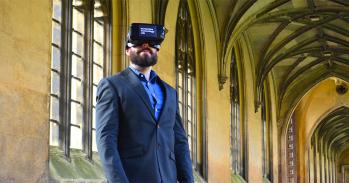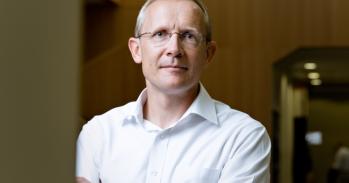
More than 1,000 people around the world have signed up to take part in the biggest ever public study of Android phone usage.
More than 1,000 people around the world have signed up to take part in the biggest ever public study of Android phone usage.
Our study already contains an order of magnitude of more participants than any study we have seen so far.
Dr Andrew Rice
Launched only six weeks ago, the research project is being carried out by PhD student Daniel Wagner at the Cambridge University Computer Laboratory and will give both individual participants and the smartphone industry with valuable information about usage patterns.
Called Device Analyzer, the research is attracting more participants on a daily basis. It will provide detailed information about the usage of Android phones which currently take the largest share of the smartphone market, representing 36 per cent of sales in the US according to a recent survey. In April alone, Android added 28,000 new applications, with users now able to access more than 100,000 applications in total.
Users opting into the Device Analyzer study agree to give Cambridge University researchers access to data about certain aspects of their mobile phone usage, including how often they charge their phones, numbers and lengths of phone calls and texts, which applications they use, which networks they are connected to, their usage of Wifi and Bluetooth devices, as well as choice of operating system settings.
Participants are able to access information about their own usage on a continuous basis. This provides them with information they can use to optimise their battery use and make the best choice of payment plan. They are also able to contribute to an exciting project that will lead to further sharing of knowledge and information.
Data from all participants is gathered to provide a global picture of how people are using Android phones. This data, which will be publicly available at no cost, could be extremely valuable to the development of the next generation of smartphones.
All direct personal identifiers such as telephone numbers are removed from the data before it is uploaded to the study’s server. When participants sign up to take part, they are given detailed information about the scheme. They can elect to drop out at any point and retroactively have their data removed from the servers.
Public release of data will occur only if participants agree, and only once it is at least three months old. During this three-month “cooling off” period, participants are able to opt out of data collection, with no record of their participation.
“This is a pragmatic trade-off” said Dr Alastair Beresford. “We know we can't provide the participants with a guarantee of anonymity, however we do remove strongly identifying data before publicly releasing it, and we are giving participants information about what we collect and the means to opt-out retroactively. If the data collection concerns or worries you, it is easy to have your data removed permanently.”
The significance of the study lies in its sheer scale as well as in the detailed information it is gathering. “Our study already contains an order of magnitude of more participants than any study we have seen so far, which is quite surprising given the size and value of the smartphone market,” said Dr Andrew Rice who oversees the project. “As a neutral, research-based organisation we are well-placed to undertake a study like this which will be a useful tool for both the participants and the industry. At the moment developers do not have access to meaningful data to guide them in terms of new developments. For example, which features and functionality are most important when designing a low-cost phone?”
Participants from 81 countries around the world are taking part in the survey. “Numbers are rising on a daily basis” said Daniel Wagner, the PhD student who invented Device Analyzer. “People are taking part because they find it both fascinating and helpful to see an analysis of their own phone usage, and also because they also like the fact that they are contributing to research that helps to build a bigger picture right across the world.”
This work is licensed under a Creative Commons Licence. If you use this content on your site please link back to this page.





